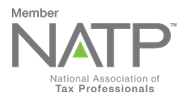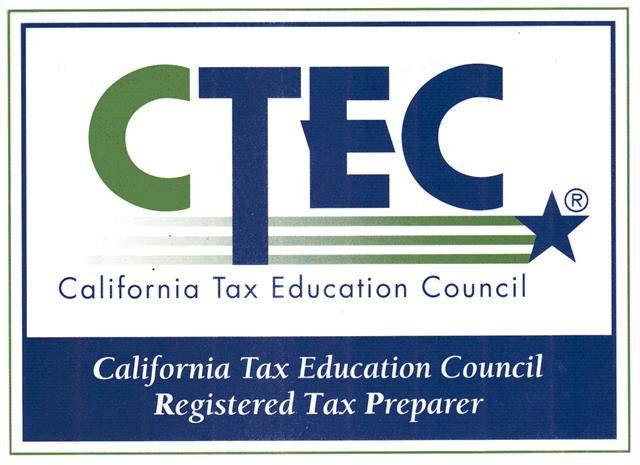
by Ambassador Tax Services, Inc. | Apr 21, 2020 | Tax Tips and News
The Internal Revenue Service last week announced yet another service that will be temporarily closed due to social-distancing measures the agency has put in place to protect employees from the COVID-19 outbreak. In addition to the growing list that includes the Income Verification Express Service (IVES), IRS National Distribution Center, live phone support, and paper-tax-return processing, the IRS has shuttered the Centralized Authorization File (CAF) service “until further notice.”
The announcement first appeared in the “QuickAlerts for Tax Professionals” newsletter, which pointed readers to IR-2020-68 for further details. In the release—aptly named “IRS urges taxpayers to use electronic options; outlines online assistance”—the IRS outlined a number of services that would be unavailable in the wake of IRS employees being ordered to work from home. Of particular interest to tax professionals, the Practitioner Priority Service section explained that CAF would be down for the foreseeable future.
While CAF is down, the IRS will not be able to issue the nine-digit number related to third-party, power-of-attorney authorization. After all, IRS staff will not be on campus to receive and process the associated paperwork, like faxed Forms 2848. That said, the agency recommended that those who need to get transcript-related information should use the online Where’s My Refund and Get Transcript tools. (Obviously, the mail-in transcript services will also be unavailable at this time.)
For more CAF-related information, check out these pages on IRS.gov:
If you want the latest COVID-19 updates from the IRS, visit “Coronavirus Tax Relief and Economic Impact Payments” on IRS.gov.
Source: IR-2020-68
– Story provided by TaxingSubjects.com

by Ambassador Tax Services, Inc. | Apr 18, 2020 | Tax Tips and News
For those taxpayers who qualify for an Economic Impact Payment, the IRS has now unveiled a new web page on the IRS website. On this “Get My Payment” tool, taxpayers who have filed either a 2018 or 2019 income tax return can find out if they qualify for the Economic Impact Payment, see if it has been mailed, and enter their banking information if needed.
What You’ll Need
First, have either the taxpayer’s 2018 or 2019 tax returns on hand. Once inside the tool you’ll be asked to supply the Adjusted Gross Income as shown on the Form 1040 as a way to verify the taxpayer’s identity.
You’ll also need the other, more usual information: name, Social Security number, address, and so on.
Getting to the tool is straightforward. Go to the IRS website, IRS.gov, and click on the “Get Info on Economic Payments” link on the main page. That leads to the “Economic Impact Payments web page.
In the center column, you’ll see a blue “Get My Payment” button. Click here to continue.
Patience May Be Needed
Now you’re on the Get My Payment web page, and it confirms that you’re in the right place to get information about:
- Your payment status
- Your payment type
- Whether the IRS needs more information from you, including bank account information
Select the blue “Get My Payment” button to actually enter the application.
Here’s where the patience part comes in. Given the fact that thousands – maybe hundreds of thousands – of taxpayers are trying to get this information all at the same time, it stands to reason it may take a while to actually get in.
When we tried, the wait time was somewhere between seven and 10 minutes. The good news is, you don’t have to leave the page, then come back through those blue buttons again. Instead, you’re automatically put “in line,” basically an electronic queue, that allows you to stay on that web page while you wait. The page will tell you when you can proceed.
You’re In!
Once into the tool’s main page, the rest is pretty simple. The usual identification information is first, name, address and SSN. Another blue button to Continue, and the rest of the functions appear after the AGI and any other needed information is entered.
We were impressed by how straightforward the entire process is, as well as by the clarity of the Help text for entering banking information.
All in all, it took far more time to wait for our turn on the web tool than it took to complete it.
Now, all that’s left to do is sit back, and wait for that deposit.
– Story provided by TaxingSubjects.com

by Ambassador Tax Services, Inc. | Apr 18, 2020 | Tax Tips and News
The Economic Impact Payment (EIP) program designed to ease the shock of halted employment during the coronavirus-related isolation period could experience some unexpected loopholes.Jared Walczak of the Tax Foundation, one of the nation’s top tax policy centers, says that he found six states that could wind up taxing at least some of their citizens’ EIPs.
Backstory
The payments are authorized by the recently passed Coronavirus Aid, Relief, and Economic Security Act (called the CARES Act), which grants up to $1,200 to each adult individual who qualifies and up to $2,400 for those married couples filing jointly. In addition, there’s an additional $500 for each qualifying child under 17. All this phases out for higher wage earners.
While it sounds simply like free money, it’s actually designed as a refundable tax credit: The payments don’t qualify as taxable income on the state or federal levels. That is, unless the taxpayers live in Alabama, Iowa, Louisiana, Missouri, Montana, or Oregon.
Walczak says a little explanation is in order, and we agree.
“Technically, these rebates are a refundable tax credit for tax year 2020 (the tax return you file in April 2021). However, they are being paid out in advance based on your most recently filed tax returns (2018 or 2019 tax year) to get them to you immediately. It is not an advance on any existing credit, or on your 2020 tax refund; it’s a new credit, tied to 2020 taxes, being paid out in advance,” Walczak writes.
At higher incomes, the credit phases out. If a taxpayer’s income is lower in tax year 2020 than it was in the tax year when the original EIP was calculated, they can claim the residual amount on their 2020 return.
In the same vein, families grow, so some people will have dependents to claim on their 2020 returns who weren’t around to be claimed previously. That entitles the taxpayer to a larger benefit. Again, Walczak writes, the difference can be claimed as a refundable credit in 2020.
Keep in mind nobody has to return any of these payments if they would have been entitled to less of a payment using a 2020 income figure versus income from 2018 or 2019 when the credit was figured.
When the Check Arrives
When a taxpayer gets their Economic Impact Payment, it doesn’t reduce how much the taxpayer owes in tax. It’s viewed as being a stand-alone payment, separate from the tax calculations. However, if the taxpayer has an additional amount to claim the following year, that leftover comes as a tax credit that does reduce their income tax liability for the 2020 tax year.
For the six states we mentioned, that’s when the going gets a little bumpy.
Each of those six, Walczak writes, offers a deduction for federal taxes paid—in varying degrees. When taxpayers figure their taxable income for state purposes, they subtract the amount they owe in federal taxes.
“This is already a peculiar policy, as it essentially turns state income taxes into the mirror image of the federal code: things that increase your tax liability at the federal level reduce your state income tax liability, and vice versa,” Walczak writes. “Taking a federal child tax credit, for instance, means that you pay more in state taxes. (You still benefit overall; the federal savings are larger than your additional state tax burden.)”
Besides, having more of their income fall into a higher federal income tax bracket lowers a taxpayer’s effective rate at the state level.
The Tax Foundation figures all six states would be in better shape if they raised the same amount of tax revenue with lower rates but no federal deduction.
Iowa and Missouri, Walczak writes, have taken steps in that direction; Iowa’s deduction goes away in a few years and Missouri now has its deduction phased out for upper incomes as part of a tax reform package.
But even with those recent steps, Walczak says those six states have an unforeseen consequence to deal with: any residual amount of the rebate their residents claim on their 2020 taxes will reduce their federal income tax liability—but also will increase the amount of tax they’ll pay to the state.
Do any of the six states actually intend to tax their taxpayers’ Economic Impact Payments? Walczak sees this as unlikely. But he thinks a better idea is to have state lawmakers specifically exempt EIPs from state tax. Then, he says, everybody can let the dust settle before a conversation can start on whether to allow federal deductibility at all on the state level.
– Story provided by TaxingSubjects.com

by Ambassador Tax Services, Inc. | Apr 17, 2020 | Tax Tips and News
Last week saw the IRS announce two new online resources for Economic Impact Payments (EIPs): the Non-Filers: Enter Payment Info Here and Get My Payment tools. On Wednesday, April 15, Get My Payment went online, providing EIP recipients a convenient way to set up direct deposit for and track the status of their payment.
Why did the IRS create the Non-Filers: Enter Payment Info Here and Get My Payment tools?
As noted in a previous blog, Non-Filers: Enter Payment Info Here was designed to help a specific subset of Americans send the IRS the information it needs to determine EIP eligibility: those who don’t normally file a tax return and aren’t a Railroad Retirement, Social Security, Social Security Disability, Supplemental Security Income, or Veterans Association benefits recipient.
This IRS announcements are tinged with a sense of urgency that directly stems from three problems:
- The first round of payments was scheduled to begin April 13, 2020
- Affected non-filers weren’t sure how to provide the IRS with the information required to qualify for EIP
- The IRS is currently grappling with logistical issues caused by social-distancing policies
Despite these difficulties, the IRS successfully collaborated with members of the tax industry to quickly develop and release Non-Filers: Enter Payment Info Here ahead of the Monday deadline. And the Wednesday release of Get My Payment addresses the other side of the coin: tracking the status of those scheduled payment.
What does the Get My Payment tool do?
Filers who log into Get My Payment can use the new IRS.gov tool to track the status of their Economic Impact Payment and—if the payment isn’t already on the way—sign up to receive it via direct deposit. To use either service, you essentially fill out an online questionnaire.
To track the status of your EIP, the IRS says that users need to enter information that was included with a recently filed return or submitted to the Non-Filers: Enter Payment Info Here tool, like their Social Security number, date of birth, and mailing address. (The IRS notes that—like Where’s My Refund, the agency’s tax-refund tracking tool—Get My Payment is only updated once per day.)
When it comes to signing up for direct deposit in Get My Payment, the IRS says users should expect to provide this banking information:
- Their Adjusted Gross Income from their most recent tax return submitted, either 2019 or 2018
- The refund or amount owed from their latest filed tax return
- Bank account type, account and routing numbers
On Friday, Taxing Subjects contributor Bob Williams will share his personal experience using Get My Payment, so be sure to check back with us to hear a first-hand account of the new IRS resource.
Source: IR-2020-72
– Story provided by TaxingSubjects.com

by Ambassador Tax Services, Inc. | Apr 17, 2020 | Tax Tips and News
Filers Receiving Supplemental Security will automatically get an Economic Impact Payment.
When Treasury Secretary Stephen Mnuchin announced the Economic Impact Payments, filers had questions about qualifying for and receiving the payment. The IRS has repeatedly explained that most taxpayers will automatically receive an EIP, while also acknowledging that a subset of non-filers will need to provide some qualifying information.
Following yesterday’s announcement, the group of non-filers who will automatically receive an EIP now includes Supplemental Security Income beneficiaries. As with previous additions to the “automatic payment category,” the IRS said this move was made possible by interagency cooperation.
How much money will SSI beneficiaries get in their Economic Impact Payment?
“SSI recipients will receive a $1,200 Economic Impact Payment with no further action needed on their part,” the IRS assured in the Wednesday release. While that covers individual SSI recipients, those with dependents under 17 will need to provide the IRS with more information to qualify for an additional $500 payment.
The IRS suggests using the Non-Filers: Enter Payment Info Here tool to make sure qualifying dependents are claimed. Unfortunately, SSI beneficiaries with dependents who wait to send the IRS this information will have their additional $500 payment delayed.
How will SSI beneficiaries receive their Economic Impact Payment?
SSI recipients will receive their Economic Impact Payment via the method they have chosen for their SSI benefits. However, the IRS clarifies that the payment will not come from the Social Security Administration, noting that “recipients will generally receive the automatic payments by direct deposit, Direct Express debit card, or by paper check.”
Important: SSI beneficiaries receiving their EIP via Direct Express debit card who claim a qualifying dependent will need to follow a special set of instructions from the IRS, which the agency says will be published soon.
Check out previous Taxing Subjects blogs about the Economic Impact Payments:
New IRS.gov Resources
COVID-19 Scam Information
Source: IR-2020-73
– Story provided by TaxingSubjects.com










